Nutrition during pregnancy

The
future mother's diet must be healthy, varied, and balanced during pregnancy
because it plays a fundamental role in the baby's development. What foods
should you eat, and what foods should you avoid during pregnancy? (
The needs of the fetus and the mother vary depending on the trimester of pregnancy. For example, before conception and during the first trimester, the mother-to-be must have sufficient reserves of folic acid to prevent developmental defects. Of the embryo, she may also suffer from nausea and vomiting, which may lead to a reduced appetite or an inability to tolerate certain foods. During the second and third trimesters, the mother-to-be's diet may vary depending on the results of the tests, particularly if an iron deficiency or gestational diabetes is detected. >. In all cases, it will be up to the gynecologist and midwife to give you all the necessary instructions and, if necessary, prescribe a specific diet. (dietitian)
And
remember: you shouldn't eat for two! It's just a matter of adapting your diet
to your new needs.
You
will find all the keys to nutrition during pregnancy in this section! (
Are there any
foods prohibited during pregnancy?

During
pregnancy, you need to take many precautions related to your diet. Certain
foods are not recommended, or even strongly discouraged, because they can cause
digestive problems or, in the worst case, cause dangerous diseases for the
fetus.
The diet you should follow during pregnancy must be healthy and balanced and contain products from all food groups: milk and derivatives, vegetables, legumes, starchy foods, fruits, meat, fish, eggs, cereals, pasta, and sugar. However, certain foods should not be part of it, or in small quantities, for the child's and yours' good.
What foods are prohibited during pregnancy?
First, it is essential to clarify that no foods are prohibited during pregnancy unless the pregnant woman suffers from a specific illness. However, there is a list of foods that should not be eaten raw and others that should only be eaten in small quantities or avoided only as a precaution:
• One of the foods you should avoid is raw fish and seafood. Sushi is incompatible with pregnancy because if the fish has not been frozen, it may contain Anisakis. This nematode worm spends its life cycle in the digestive system of fish and marine mammals, which could cause food poisoning. Another possible danger is toxoplasmosis, an infectious disease that, although harmless, can be potentially dangerous to the fetus.
• Undercooked meat can also cause toxoplasmosis since the parasite can be found there. Liver is not recommended because, although it contains a lot of vitamin A, consumed in large quantities, it can affect the embryo's development. The liver may also contain substances given to the animal to fatten it.
• Experts also recommend moderate salt intake to avoid water retention.
• although it is not about food, pregnant women should moderate their caffeine consumption (coffee, tea, or cola) and soft drinks. Indeed, in addition to gas, these drinks contain sugar and additives and do not provide nutrients. Finally, alcohol should be avoided because it increases the risk of miscarriage, premature birth, and other complications during childbirth. In addition, alcohol prevents the absorption of folic acid and other B vitamins, which are essential for the healthy development of pregnancy.
What are the
risks of eating panga and perch? (
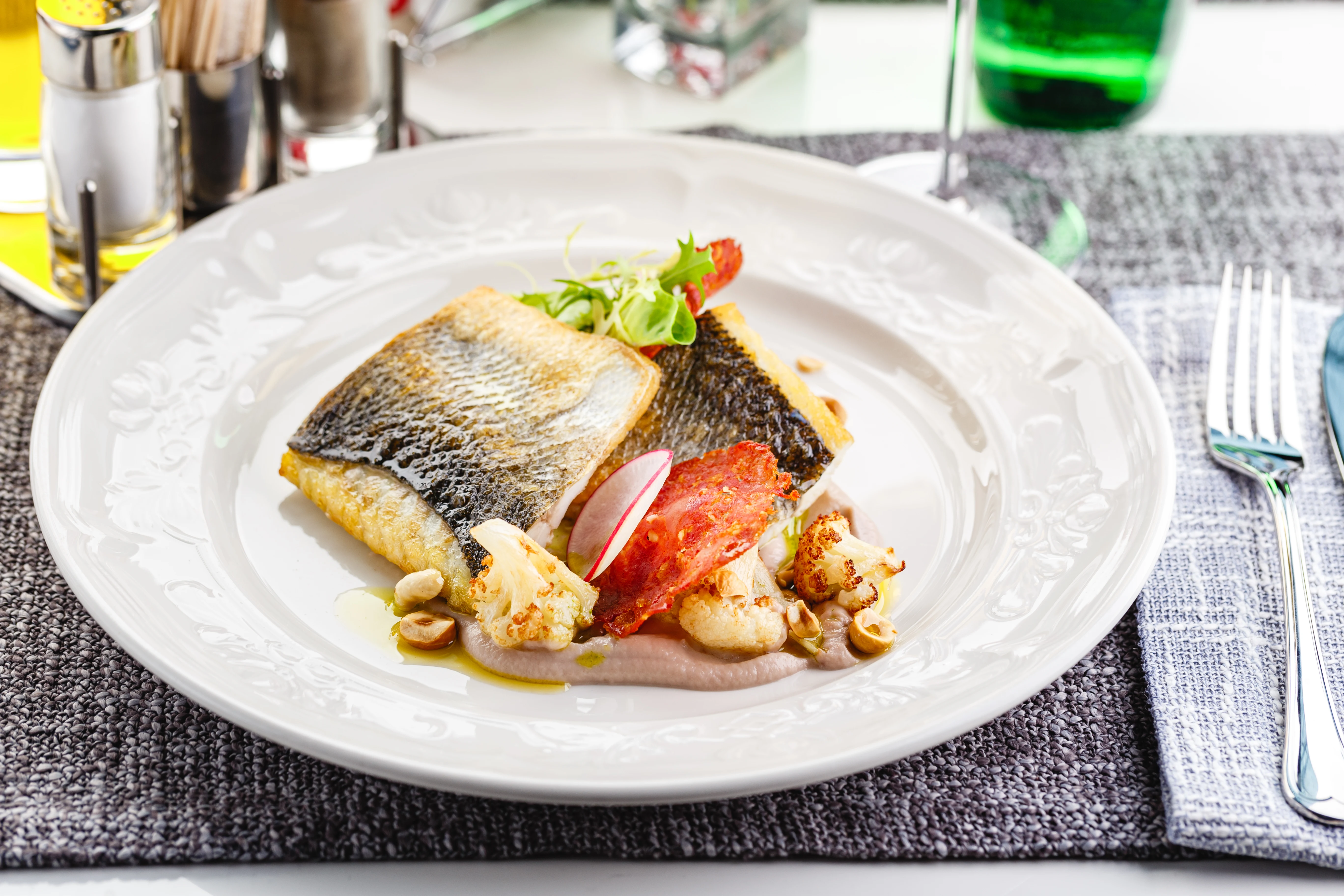
Children
must follow a balanced diet and eat fish. Indeed, it is an excellent source of
protein, which contains many minerals and maintains tissues, organs, and
defense systems in good health. However, not all fish are good for your health,
and there have been questions about the dangers of panga and perch for some
time. For what?
Panga and perch are very economical options for eating fish; in supermarkets, they are usually sold in fillets and without bones. However, the Food Observatory advises being careful about the quantity consumed.
Why is it advisable not to overeat panga and perch?
For these fish, which are raised in fish farms in Lake Victoria (Africa) and the Mekong River (Vietnam), the news broke in 2010 when the OCU (Consumers Association in Spain) found traces of pesticides and mercury in fresh and frozen samples of panga and perch. The study showed that these fish should be eaten only a few times a week at most). Upon discovering the presence of elements harmful to health, many consumers have decided to eliminate them from their diet permanently. In four panga samples out of 23 analyzed, trifluoroalin, a herbicide that has been banned in Europe, was found, and in nine of them, quantities of mercury were detected that did not exceed the legal limit (0.5 mg/kg), but which still reached half of the threshold limit.
Unfortunately, these fish entered the French market with force due to their attractive price and ease of cooking. On the other hand, these fish are common on weekly menus in schools. “Knowing that these fish are served in school canteens and that children may eat them several times a week, mercury consumption can be significant,” commented the OCU.
Therefore, it is essential to control the consumption of panga and perch, reducing it to once a week as much as possible, but above all to prevent the introduction of these fish into school canteens.
Can I drink
decaffeinated coffee while pregnant?
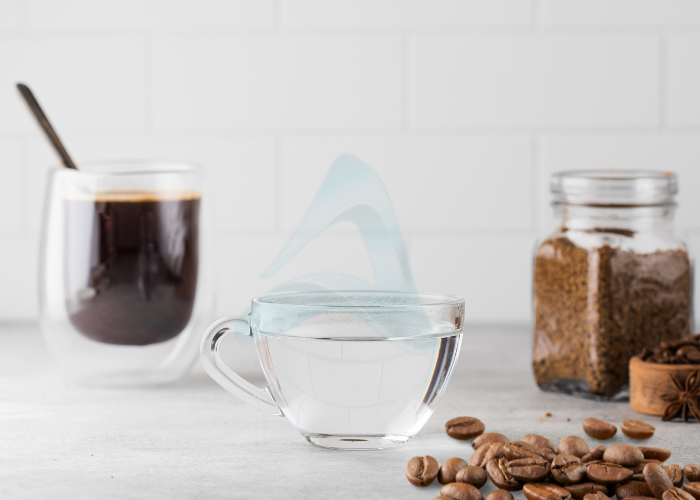
A
coffee? (Irish coffee) - No, I'm pregnant. » Future mothers respond with regret to the offer
of a hot cup and find themselves frustrated at the idea of waiting another
nine months or less to be able to sip this energizing beverage. Caffeine is the
culprit. What if we allowed ourselves a little decaf? All our explanations are
in this article.
Decaffeinated, an alternative to classic coffee
Coffee is a drink not recommended for pregnant women
because of the exciting effect of the caffeine it contains. Decaffeinated
coffee becomes the ultimate alternative for those who cannot do without their
ritual. According to experts, decaffeinated coffee has minimal caffeine, making
it a permissible drink during pregnancy, but only if consumed in moderation.
Doctors then designate as "moderate" the intake
of one cup daily and no more. This dose is the limit for a healthy pregnant
woman. On the other hand, in the event of a high-risk pregnancy, even
decaffeinated coffee is not recommended.
This precaution is taken because coffee, even
decaffeinated, still contains caffeine. Indeed, current processing techniques
have yet to succeed in removing caffeine entirely. Regular coffee contains 50
times more caffeine than decaffeinated, but the latter still includes a small
dose.
Decaffeinated coffee: how is it
obtained?
Reluctance to consume decaffeinated coffee comes from the
lack of information on how it gets into our cups. To extract caffeine,
manufacturers use many methods, and some of them involve potentially
carcinogenic chemicals. Fortunately, the next step is to roast the coffee by
passing it through high heat, which will then evaporate the harmful substances to
humans.
Decaffeinated coffee can also be obtained by
decaffeination with carbon dioxide. This method, therefore, does not use any
dangerous chemicals. To be completely safe, you can also have decaffeinated
coffee from a plant with very little caffeine.
Decaffeinated coffee: properties and
contraindications
Decaffeinated coffee has many benefits for general
health: anti-inflammatory, antimicrobial, and anti-tumor. Its properties allow
control of blood sugar levels and, therefore, type 2 diabetes. Its action on
the brain and the cerebral system is also recognized: it slows down dementia
and Alzheimer's disease, as well as senility.
However, decaffeinated coffee is not free from
contraindications. Compounds in the coffee bean produced by the extraction
process can harm the health of the heart and nervous system. Decaffeinated
coffee differs from regular coffee for its reduced effects, but stomach upset
and reflux are possible.
For pregnancy, limiting your consumption to one cup per day is prudent. With your belly growing, your stomach will be pent up and more sensitive. Too much coffee, even decaffeinated, could lead to gastritis.
Eating seafood
and shellfish during pregnancy: precautions to take

The
diet of pregnant women is a delicate subject. Between the irresistible desires
of the mother-to-be and the restrictions related to health, we sometimes have
difficulty finding our way. To eat seafood and shellfish during pregnancy,
without guilt or fear, err on the side of caution by following our advice. (
Limit seafood consumption when you are pregnant.
Everything a woman consumes during her pregnancy will impact her baby. All nutrient intakes influence caloric and nutrient intakes in the fetus and provide energy to the woman. Fish and seafood are known to be excellent sources of animal protein. However, caution is advised with dishes based on raw fish: sushi and carpaccios.
The risk conveyed by the consumption of raw fish and seafood lies in possible contamination with salmonella and other bacteria. Toxic infection in a pregnant woman exposes her to more severe complications than in a non-pregnant person. If your cravings for shellfish are irrepressible, set limits or force yourself by deliberately choosing other, safer culinary preparations.
Eating seafood during pregnancy: what are the risks?
According to doctors, the risks of eating seafood during pregnancy outweigh the supposed benefits. Protein can be found in other foods. Shellfish often contain potentially harmful germs and microorganisms. Salmonella is one of the most pathogenic bacteria causing foodborne illness. The woman then risks extreme dehydration and hospitalization.
Anisakis, a parasite contained in seafood, also causes digestive problems. This parasite lives in the digestive system of fish and marine mammals. Toxoplasma, another parasite found in undercooked meat and fish, can cause infectious disease in the mother-to-be and hinder the neurological development of the fetus.
How to eat seafood safely during pregnancy?
If your fondness for shellfish is beyond reproach, take them well-cooked. Make sure you have produce that is freshly caught and then cooked thoroughly. Mussels, cuttlefish, clams, shrimp, all must be well cooked. Take them in small quantities to satisfy your craving while minimizing the risk of contracting food infections.
It is always wise to seek advice from your doctor. He can advise you on a particular food based on your state of health and your nutritional needs. Indeed, the need for omega-3 fatty acids is incredible in some people, even though this element is abundant in certain fish. The consultation will be able to define the menu to optimize nutritional intake during your pregnancy. In any case, it is better to refrain from eating seafood during pregnancy if you have doubts about its origin, freshness, and cooking methods.
Pregnancy
and breastfeeding: yes to coffee, but in moderation

A Brazilian study shows us that there is no correlation between the caffeine ingested by the mother and the newborn's nighttime awakenings.
Drinking coffee during pregnancy or breastfeeding does not cause any sleep problems in the baby. So here is yet another preconceived idea debunked! In any case, this is the conclusion of a Brazilian study published in the journal Pediatrics. After an in-depth analysis of the advantages and disadvantages, nothing would justify prohibiting this little vice from pregnant women and young mothers.
Researchers studied the habits of 4,200 women who gave birth
in Pelotas (Brazil). At birth, all these women responded to a survey on their
consumption habits regarding caffeine-based drinks during the nine months of
the delivery—pregnancy. The survey was repeated three months later, asking more
than 800 breastfeeding women to answer a questionnaire on their baby's sleep
over the previous 15 days: how many hours the baby slept during the day, at
night, and how often he woke up. Comparing all these data, the researchers
concluded that there could indeed be a link between caffeine consumption and
babies waking up, but that this result did not have statistical value because
other factors could also be involved.
The best thing is to rely on common sense: yes to coffee, but in moderation... significantly because an excessive dose of caffeine would affect the mother's sleep at a time when she needs it the most.
More Calcium and
Vitamin D During Pregnancy and Breastfeeding

Calcium
requirements increase by 30% during pregnancy and breastfeeding; vitamin D, for
its part, allows the bones to absorb it correctly.
Physiological changes linked to pregnancy and breastfeeding lead to a 30 % increase in calcium needs in pregnant women, with the average amount for an adult being set at 1 gram per day. Vitamin D is also fundamental because it allows calcium to bind well to bones. If the needs are not as great as for calcium, its intake should not be below 10 µg (i.e. 400 IU) per day.
These findings were presented by Dr. Javier Haye
Palazuelos, chief physician of the gynecology department of the General
University Hospital of Ciudad Real in Spain, during the "Calcium and
Vitamin D" workshop held in Santa Cruz de Tenerife.
On this occasion, specialists highlighted that, despite
experts' recommendations, neither pregnant women (in a proportion of 21.4%) nor
those who are breastfeeding (in a ratio of 64%) absorb the recommended amounts
of calcium. The percentage is even higher for vitamin D: 78.6% for pregnant
women and 64% for breastfeeding women.
Calcium and vitamin D: in which foods can you find them?
To achieve the recommended amounts of these two
nutrients, experts recommend that pregnant and breastfeeding women consume
dairy products that are easier to absorb.
"Yogurt is one of the most important sources of
calcium. Three or four dairy products per day are enough to maintain bone
density. If they are enriched with calcium and vitamin D, it's even
better," explains Julie Andreu, an expert from the NUSA Program (Nutrition
and Health).
In addition to yogurt, milk, cheese, fish, shellfish,
vegetables, and ice cream are other sources of calcium for vitamin D; it is
found in fatty fish (tuna, mackerel, salmon, etc.), certain fortified foods
such as dairy products, orange juice, soy milk, and cereals, as well as in beef
liver, cheese and egg yolk. But the primary source of vitamin D is the sun.
Combining a diet rich in this nutrient and adequate sun exposure is advisable.
Alternatives to
cow's milk
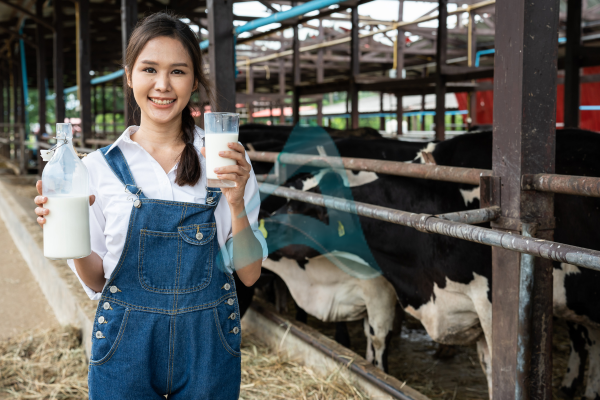
Don't
like or tolerate cow's milk? There is no shortage of alternatives: soy, rice,
oat, almond, or even goat milk... The choice will be difficult! Find out what
the pros and cons of each are.
Soy, rice, oats, almond, or goat's milk... Their taste and composition are very different from traditional cow's milk: besides their natural flavour, they are flavoured (vanilla, cocoa, etc.) or enriched with nutrients that make them more balanced and complete.
Soy, rice, oats, almond, or goat's milk... Their taste
and composition are very different from traditional cow's milk: besides their
natural flavour, they are flavoured (vanilla, cocoa, etc.) or enriched with
nutrients that make them more balanced and complete.
Soy milk
Known for centuries in China, soy milk is, in its
composition, very similar to cow's milk since it also contains a lot of
proteins, lipids, and carbohydrates in an easily assimilated form. To prepare
it according to Eastern tradition, it is first necessary to soak the seeds for
a few hours, then crush and grind them until you obtain a whitish liquid. This
juice is then diluted in three times its volume of water, boiled, and centrifuged
to eliminate suspended residues.
In Western countries, soy milk prepared this way is rare.
We, therefore, use particular varieties that are boiled for longer to allow all
the components responsible for this odour and taste so characteristic of soy to
evaporate.
Benefits and precautions to take with soy milk
We often choose soy milk to replace cow's milk when it is
poorly tolerated: it does not contain lactose, and soy proteins are very
different. However, you should know that soy is a potentially allergenic food;
therefore, around 30% of people who do not tolerate cow's milk are also
intolerant to soy. For others, soy milk remains a good alternative, especially
if you choose milk enriched with sugars, fats, minerals (especially calcium ),
and vitamin B12 to obtain a nutritionally better-balanced product.
Finally, when purchasing, check:
- The expiration date.
- The presence or absence of genetically modified
ingredients. The majority of soy produced worldwide is, in fact, of transgenic
origin, and although the latest research shows a certain equivalence with
natural soy, the consumer has the right to decide for himself which product he
wants. Bought.
Rice milk
Recently, rice milk has also been commercially available,
obtained from ground rice grains and mixed in filtered water. Its delicate,
sweet, and natural flavour makes it a particularly refreshing drink, ideal as a
base for smoothies.
Regarding nutrients, rice milk is rich in carbohydrates but low in protein. Although it cannot be considered an alternative to cow's milk, it can be consumed in addition to other dairy products such as cheese or yogurt.
Benefits and precautions to take with rice milk
Lactose-free and containing proteins radically different
from cow's milk, rice milk poses no problem regarding intolerance. It is also
one of the least allergenic foods because it is gluten-free and represents an
excellent alternative for people who have celiac disease. For rice milk to
complement or substitute for cow's milk, preferably choose enriched preparations,
notably in calcium and vitamin D, which are very important during pregnancy.
To reduce the watery texture and slightly correct the
taste of rice milk, manufacturers often also add sunflower oil and salt.
Oat milk
Here is yet another plant-based milk. Very similar to
rice milk from a nutritional point of view, oat milk is unsuitable for coeliacs
because it contains gluten. It is also less sweet while remaining very sweet,
which makes it a particularly refreshing drink.
Benefits and precautions to take with oat milk
Generally well tolerated (except by people with gluten
intolerance), oat milk allows all gastronomic combinations since it can be used
in morning cereals and in dessert preparation. Like rice milk, commercially
available oat milk is enriched with nutrients to bring it as close to cow's
milk: calcium, vitamin D, and often iron because the need for minerals
increases considerably during pregnancy.
Almond milk
If soy milk is similar to cow's milk and rice and oat
milk are the most refreshing and light drinks, almond milk is undoubtedly the
most appreciated by gourmands. Typically Mediterranean, it is obtained from
crushed almonds soaked in water to extract this characteristic flavour. As
almond milk is much more caloric (already naturally, and manufacturers still
add sugar), cutting it with oat or rice milk may be interesting.
Benefits and precautions to take with oat milk
Its particular and intense flavour makes almond milk an
alternative to cow's milk and a refreshing drink to consume occasionally when
it is boiling. It is also a source of beneficial nutrients: polyunsaturated
fatty acids (of which almonds are particularly rich), magnesium, iron, calcium,
and vitamin B. Almond milk can finally help young mothers suffering from
digestive disorders or who are lacking appetite: be careful not to overdo it as
it can make you gain weight.
Overall, plant milk (soy, rice, oat, and almond) is an exciting alternative for people who do not consume any products of animal origin, as well as for those who must monitor their cholesterol.
Goat's milk
Since goat's milk is of animal origin, it contains
cholesterol. Its differences from cow's milk are nevertheless significant: it
is devoid of carotene, is very white, and is much more digestible than cow's
milk due to the small size of the fat globules. Its mild flavour, close to that
of breast milk, makes it a product generally very well accepted by children who
do not like cow's milk.
Benefits and precautions to take with goat's milk
Of all the milk mentioned, goat's milk is closest to
cow's milk: it contains a lot of calcium, vitamin A, and taurine, essential
amino acids during childhood. But be careful, as goat's milk contains lactose,
it is not recommended for people intolerant to this sugar or those allergic to
cow's milk proteins, even if it includes lower quantities. You should also know
that goat's milk contains slightly more protein than cow's milk (76 kcal per
100 g compared to 63 kcal) and more fat (4.8 g per 100 g, compared to 3.6 g for
cow's milk).
Unless it is a matter of taste, we generally do not recommend goat's milk to expectant mothers.
Other milks: kamut, spelled and millet
Beyond rice milk and oat milk, there are other
plant-based milks. You will find kamut, spelled, and millet milk in specialized
stores, each with its characteristics. If their common denominator is their
high starch content, millet milk is characterized by its richness in iron,
phosphorus, and silicon, spelled milk is an essential source of fiber, and
kamut milk contains many proteins. Manufacturers add vegetable oil (mainly
sunflower) to all these milk to improve mouthfeel and increase the content of
valuable fatty acids.
Cow's milk: Good or bad?
Although considered a staple food, whatever our age,
cow's milk has recently been the subject of a certain amount of criticism after
studies have shown its limitations and side effects.
Researchers have concluded that, even if cow's milk plays
a vital role in the daily diet, it is not essential for a good diet. Man is
also the only living being to continue to consume milk after weaning, and it
has been noted that populations who do not consume it enjoy excellent health.
Despite everything, cow's milk remains a valuable source
of calcium, particularly to slow down osteoporosis or in the reconstruction and
renovation of tissues, particularly in a vegetarian diet. The doubts that have
recently arisen are linked to the possible involvement of cow's milk in the
development of certain cancers. According to a report recently published by the
World Cancer Research Fund International, these questions are unfounded since,
at the same time, a relationship has been established between the appearance of
prostate cancer and excessive consumption of foods rich in calcium (not only
milk), the protective role of milk against colon and rectal cancers has also
been highlighted.
In summary, today, we consider that milk, like most foods, has advantages and disadvantages and that the prevalence of one over the other depends on personal factors and, of course, the quantity ingested: the amount Generally recommended for adults is one liter per day. This dose corresponds to a deficient amount of cholesterol (only 33 mg), perfectly compatible with any diet.
Exotic dishes
for pregnant women
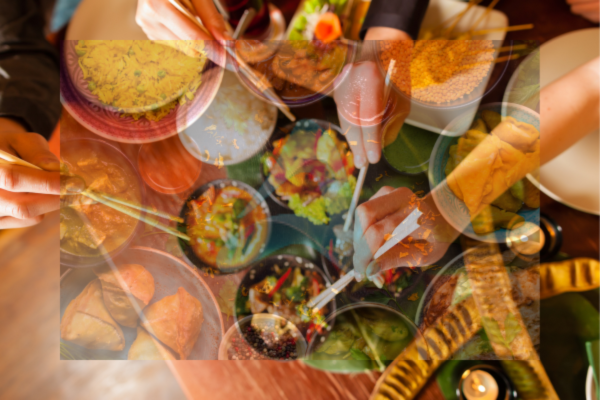
These
dishes that we call "ethnic" are found more and more often in
supermarkets. And among all these new flavours for our taste buds, some are
particularly appropriate for future mothers.
CHICKPEAS: Lebanese style
It is not an unknown food for us, but our cuisine underestimates them, compared to the importance given to them by the cuisine of North Africa and the Middle East. In these countries, pregnant women eat chickpeas and animal proteins to cover the increased need for amino acids necessary for the development of the fetus. Compared to bench beans, they have the advantage of causing fewer intestinal swelling problems, especially if consumed in a soupy, finely mixed way, like hummus, a typical dish of Lebanese cuisine.
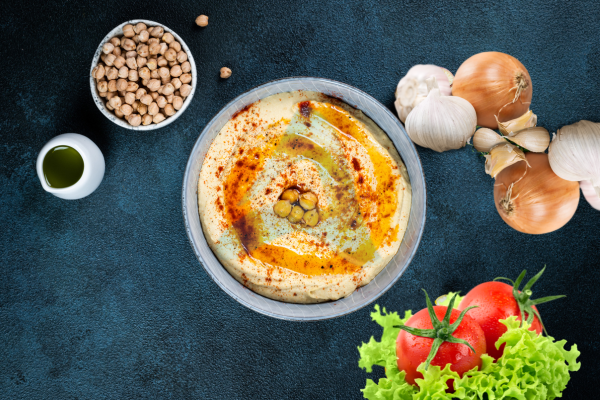
Ingredients for 4 people: 250 g of cooked chickpeas, 1 or 2 cloves of chopped garlic, 1 tablespoon of tahini (or peanut butter), a little milk, the juice of 1 or 2 lemons, olive oil olive, chopped parsley, 1 teaspoon of sesame seeds, salt, and pepper.
• Mix the cooked chickpeas and pass the resulting paste through a vegetable mill or sieve to remove any remaining skin. Pour the dough into a salad bowl. Then add the chopped garlic and the rest of the ingredients and mix well with a wooden spoon. Let it sit in the refrigerator for at least an hour, and serve it with toast.
CURRY: A taste of India
In India, in pregnancy monitoring protocols, particular attention is paid to hygiene recommendations and the use of spices to ensure excellent food safety. While paprika is not a good ally for the mother-to-be, curry can be helpful in its mildest version. Consumed in moderation, it stimulates digestive functions and provides essential protective substances, such as curcumin, which are beneficial for its anti-inflammatory, antioxidant, and stimulating properties for the immune system.

Ingredients for 4 people: 50 g of margarine or clarified butter, 1 onion, 2 cloves of garlic chopped, 1 tablespoon of fresh curry powder, 1 green pepper chopped, 350 g of vegetables cut into small pieces, 1 spoon tablespoon of powdered coconut, vegetable broth, 1/2 teaspoon of turmeric, salt, and pepper.
• Melt the margarine in a pan and brown the onion and garlic. Sprinkle with curry and turmeric and cook for two minutes, stirring often. Add the pepper and let set before adding the rest of the vegetables. Add the coconut, cover with broth, and cook for a few minutes. Season with salt and pepper and serve with rice, chutney, and creamy yogurt.
AVOCADO: Live from the Caribbean
It is essential to consume enough fats, especially "good" fats, which also build the baby's nerve tissue during pregnancy. In France, we are lucky to consume virgin olive oil easily, but there are not many regions where olive trees proliferate. Thus, in the Caribbean, in addition to fish, rich in Omega-3, the consumption of avocado has become popular, a very particular fruit because it contains more than 20% fat, mainly unsaturated, i.e., i.e., "good." Here is a cold soup made with avocado.

Ingredients for 4 to 6 people: 3 ripe avocados, 2 leeks or onions cut thin, the juice of a lime, 1/2 liter of milk, salt, and pepper.
• Cut the avocado into slices lengthwise. Crush the pulp and prepare a puree. Add the leeks or onions, then the lemon juice, stirring well. Finally, add the milk so that the cream is smooth. Season with salt and pepper, then cool in the refrigerator before serving.
PINEAPPLE: An idea of Thailand
Traditional Thai medicine relates to the oriental concept that one must maintain a good balance between opposing factors to be well. Concretely, pregnancy is considered a "hot" condition, which must be controlled by giving preference to the use of foods that are "fresh" in nature. Among these foods, pineapple deserves a particular place because it is not only rich in vitamin factors and fiber but also contains a large amount of an enzyme, bromelain, capable of facilitating the digestion of proteins. Thanks to pineapple, a new way of enjoying rice comes to us from Thailand.
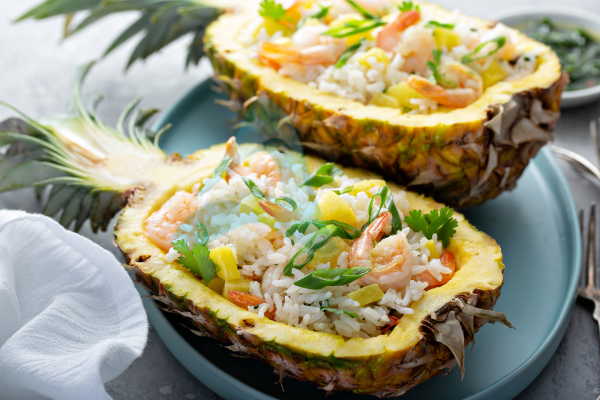
Ingredients for 4 to 6 people: 1 large pineapple, 450 g cooked rice, 3 tablespoons oil, 1 beaten egg, 1 medium onion in slices, 1 tablespoon soy sauce, 100 g shrimp or tuna, 100 g of walnuts, 1 red pepper, 1 tablespoon of chopped coriander, salt and pepper.
• Remove the skin from the pineapple and cut the pulp into pieces. Heat the oil in a frying pan, pour the beaten egg into an omelette, and cook on both sides like a pancake. Remove the omelette and cut it into strips. Sauté the onion, add the soy sauce and rice, and cook for three minutes. Add the pineapple, shrimp, walnuts, and omelette strips. Saute for two minutes and add salt and pepper. Serve with slices of pepper and coriander.
Anemia during
pregnancy: advice from the midwife

Iron deficiency is one of the most common ailments of pregnancy. The formation of the placenta, then the increase in blood volume, explains the demand for iron from the mother-to-be's body. A midwife explains how to confirm that you have anemia during (anemia symptoms) your pregnancy and how to treat it.




.png)
0 Comments